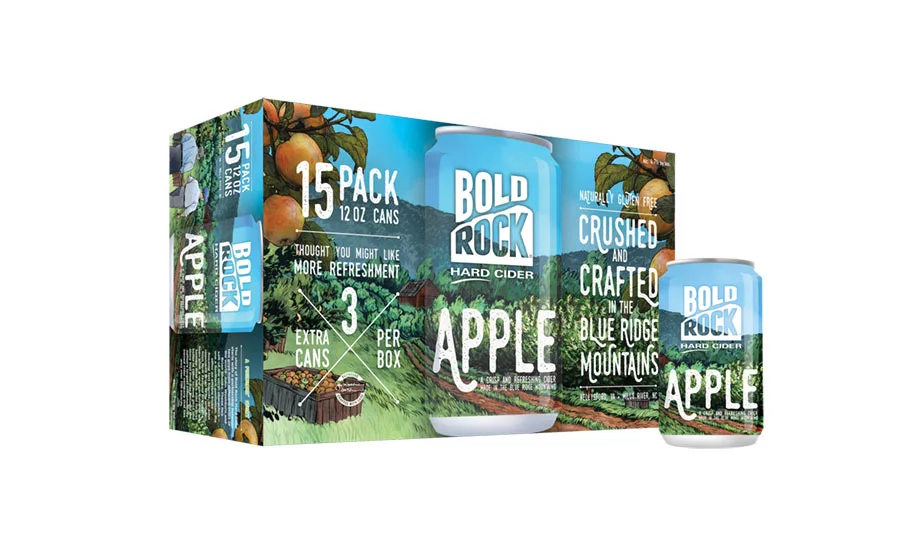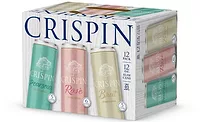2018 Beer Report: Education, awareness vital to future of hard cider market
Regional, craft like brands positive for the alcohol segment

Spread option offenses have helped make young college football quarterbacks household names. However, when these spread option quarterbacks transition to the professional level, general managers, coaches and fans have recognized the learning curve that these new players must undergo to adjust to the more traditional, less high-flying offensive schemes used in professional leagues.
Educating these players can be key to a successful career, but when it comes to the U.S. beer market, educating consumers is just as valuable for bringing the hard cider segment back to growth.
“As the [hard cider] category becomes more fragmented with new local entrants, educating consumers on why craft versus other alternative beverage alcohol brands will be critical in order for both brands and the category to grow,” says Brian Sudano, managing partner with New York-based Beverage Marketing Corporation (BMC). “With all the flavored ciders, it is hard for entry-level consumers to distinguish between flavored malts and flavored ciders. A common question is: why cider versus malt? Sampling to reinforce education will also be very important.”
Another example of how hard cider could educate consumers is through advertising and marketing efforts, Sudano says.
“During ciders’ rapid growth, advertising reached $65 million,” he says. “Today, total advertising is a fraction of that level, which impacts top-of-mind awareness levels.”
This education comes as the hard cider segment has been challenged by a variety of factors, analysts note.
“Flavored hard cider drove accelerated growth of hard cider a few years ago,” Sudano explains. “Now, it is a drag on the category. Flavored hard cider competes in the large alternative beverage alcohol category. This consists of products that sit outside traditional beer, wine and spirits.”
Similar to the craft beer segment, though, Sudano notes that not all hard cider brands have been challenged.
“[M]ost of the innovation is taking place by smaller (craft-like) cider players,” he says. “However, the number of craft ciders remains small and very local with non-craft cider players in many states.”
(Brand family)
| DOLLAR SALES | % CHANGE VS. PRIOR YEAR | CASE SALES | % CHANGE VS. PRIOR YEAR | |
| Angry Orchard | $215,511,862 | -5.4 | 6,018,065 | -6.6 |
| Strongbow | $26,740,909 | -9.1 | 720,833 | -10.1 |
| Bold Rock | $19,632,135 | 57.5 | 583,421 | 47.9 |
| Stella Artois | $17,779,821 | 6.5 | 492,315 | 6 |
| Smith & Forge | $13,666,102 | -27.1 | 413,866 | -29.3 |
| Woodchuck | $11,388,814 | -48.8 | 307,676 | -49.9 |
| 2 Towns | $8,095,050 | 61.7 | 121,415 | 83.6 |
| Ace | $7,330,094 | 47.3 | 177,425 | 47.1 |
| Austin Eastciders | $6,620,590 | 103.7 | 122,336 | 42.6 |
| Crispin | $6,275,108 | -13.1 | 145,513 | -10.3 |
| Total sales* | $392,549,643 | -3.1 | 10,305,529 | -6.1 |
The Top 10 hard ciders by brand family for the 52 weeks ending Dec. 31, 2017, according to Information Resources Inc. (IRI).
Source: Information Resources Inc. (IRI), Chicago. Total U.S. supermarkets, drug stores, gas and convenience stores, mass merchandisers, military commissaries, and select club and dollar retail chains for the 52 weeks ending Dec. 31, 2017.
An example of craft cider success is Portland, Ore.-based Ulee’s Light Cider Co., which launched Ulee’s Light Cider Dry and Ulee’s Light Cider Citra last year. Ulee’s Light Cider Dry is light with an apple nose, while Ulee’s Light Cider Citra is made with citrus hops and has a citrusy taste with a subtle hoppy nose, the company says.
Although the local faction of the hard cider segment is appealing to consumers, it is not making up for the declines of national brands, Sudano notes.
“This lack of breadth in craft cider players impacts overall category volume as, in aggregate, their growth does not offset larger players’ declines,” he says. “Finally, traditionally large alternative beverage alcohol malt brands are coming out with cider extensions. This can be confusing to consumers.”
But not all analysts think the bloom is off the rose when it comes to hard cider. “Cider has experienced a resurgence over the past five years as consumers explore alternative alcoholic beverages to traditional beer, wine and liquor products,” says Chrystalleni Stivaros, lead analyst for Los Angeles-based IBISWorld.
Stivaros adds that because hard cider typically is marketed as a more palatable alternative to beer, it appeals to those who might not traditionally consume beer.
Recently, cider-makers have shown their eagerness to reach new consumers by developing varietals that capitalize on palatable profiles but also tap into trends outside of the beer and hard cider markets.
For example, Strongbow, Crispin and Bold Rock each have released hard ciders that were inspired by the Rosé wine market.
Strongbow Hard Cider is supporting the launch of Rosé Apple, a semi-dry hard cider with a touch of red-fleshed apples, with limited-time only spring and fall offers of four-pack mini-cans to drive trial and awareness of the new flavor.
Meanwhile, Crispin Cider Co. introduced Crispin Rosé, which features a crisp, dry finish to offer an easy-to-drink option for wine and cider consumers, the company says.
Available as a seasonal option, Bold Rock Hard Cider released Rosé in select markets. Bold Rock created the limited-edition hard cider, which contains an apple base, to have a vibrant fresh finish akin to the wine counterpart, it says.
Bold Rock has been a bright spot for the hard cider segment as the regional brand posted nearly 58 percent dollar sales growth and approximately 48 percent case sales growth for the 52 weeks ending Dec. 31, 2017, in U.S. multi-outlets, supermarkets, drug stores, mass merchandisers, gas and convenience stores, military commissaries, and select club and dollar retail chains, according to Chicago-based Information Resources Inc. BI
Looking for a reprint of this article?
From high-res PDFs to custom plaques, order your copy today!






